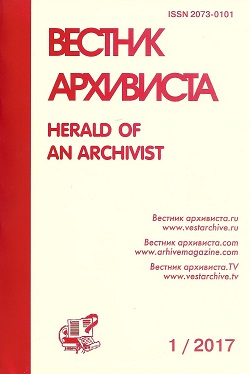| 22 October 2024
Posted in
Archival funds and collections
Vorob'ev E.P., Yashchenko R.V., Volgograd, Russian Federation
Arson as a Form of Peasant Protest in Post-reform Period: A Case Study of the Saratov Province
Annotation
The article addresses the issue of arsons in the Saratov province villages in the post-reform period. In 1861-1904 the character of the peasant movement was gradually changing, which translated in step-up of destructive and violent acts. The authors make a reappraisal of peasant uprisings and improve methods of their computation. An instance of a village participation in social protest is suggested as a unit of measuring peasant uprisings. Through studying Tsarist Russia law-enforcement authorities records the causes and over-time patterns of arsons were established, as well as their perpetrators. The amassed factual material reveals the peasants’ attitude to fire and arson, as well as society's response to disasters brought by fire. The efficiency of measures taken by the local authorities to combat arsonists was markedly low: the latter often went unpunished. Feeling support of a broad strata of peasantry, they used fire to chase the landowners from the country-side. Not only regular members of the obshchina, but also substantial peasants who had the resources for developing additional parcels of land were interested in that outcome. Tendency to use the “Red Rooster” to protect their interests was exacerbated by acute psychological motives: hatred of landlords, revenge, thrill of the lawlessness. According to the authors, revolutionary propaganda of the neo-Narodnichestvo organizations played an important role in the spread of arson. On the example of the Saratov province the authors are able to prove that results of the radical political forces’ operations among the peasants were more significant than previously thought. Land scarcity didn’t allow some of the young peasants to realize their full potential in farming and as a result they soaked up ideas from the agitators and banned literature. The analysis shows a negative side of peasant uprisings, which deterred the economic development of the country-side. The authors conclude that the spread of arson was a herald of the rural disorders of the First Russian Revolution of 1905-1907.

Keywords
Source, arson, peasants movement, post-reform period, revolutionary propaganda, landlord.
Download the article: pdf
About the authors
Vorob'ev Evgenii Petrovich, PhD in History, associate professor at Volgograd State Architecture and Construction University, Russian Federation, 8-927-518-34-97, This e-mail address is being protected from spambots. You need JavaScript enabled to view it
Yashchenko Roman Viktorovich, PhD in Pedagogy, associate professor at Volgograd State Technical University, Russian Federation, 8-919-798-58-15, This e-mail address is being protected from spambots. You need JavaScript enabled to view it














